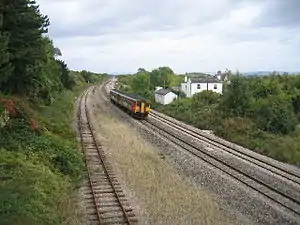

Hereford, Ross and Gloucester Railway | ||||||||||||||||||||||||||||||||||||||||||||||||||||||||||||||||||||||||||||||||||||||||||||||||||||||||||||||||||||||||||||||||||||||||||||||||||||||||||||||||||||||||||||||||||||||||||||||||||||||||||||||||||||||||||||||||
|---|---|---|---|---|---|---|---|---|---|---|---|---|---|---|---|---|---|---|---|---|---|---|---|---|---|---|---|---|---|---|---|---|---|---|---|---|---|---|---|---|---|---|---|---|---|---|---|---|---|---|---|---|---|---|---|---|---|---|---|---|---|---|---|---|---|---|---|---|---|---|---|---|---|---|---|---|---|---|---|---|---|---|---|---|---|---|---|---|---|---|---|---|---|---|---|---|---|---|---|---|---|---|---|---|---|---|---|---|---|---|---|---|---|---|---|---|---|---|---|---|---|---|---|---|---|---|---|---|---|---|---|---|---|---|---|---|---|---|---|---|---|---|---|---|---|---|---|---|---|---|---|---|---|---|---|---|---|---|---|---|---|---|---|---|---|---|---|---|---|---|---|---|---|---|---|---|---|---|---|---|---|---|---|---|---|---|---|---|---|---|---|---|---|---|---|---|---|---|---|---|---|---|---|---|---|---|---|---|---|---|---|---|---|---|---|---|---|---|---|---|---|---|---|---|
| ||||||||||||||||||||||||||||||||||||||||||||||||||||||||||||||||||||||||||||||||||||||||||||||||||||||||||||||||||||||||||||||||||||||||||||||||||||||||||||||||||||||||||||||||||||||||||||||||||||||||||||||||||||||||||||||||
Railways in Hereford | ||||||||||||||||||||||||||||||||||||||||||||||||||||||||||||||||||||||
|---|---|---|---|---|---|---|---|---|---|---|---|---|---|---|---|---|---|---|---|---|---|---|---|---|---|---|---|---|---|---|---|---|---|---|---|---|---|---|---|---|---|---|---|---|---|---|---|---|---|---|---|---|---|---|---|---|---|---|---|---|---|---|---|---|---|---|---|---|---|---|
| ||||||||||||||||||||||||||||||||||||||||||||||||||||||||||||||||||||||
The Hereford, Ross and Gloucester Railway (also known as the Gloucester and Dean Forest Railway) was a railway which ran for 22+1⁄2 miles (36.2 km) linking Hereford and Gloucester, England, via Ross-on-Wye. It was opened on 1 June 1855 as a 7 ft 1⁄4 in (2,140 mm) broad gauge line, it was amalgamated with the Great Western Railway in 1862. In 1869 the railway was converted to 4 ft 8+1⁄2 in (1,435 mm) standard gauge.[1] The railway was closed to passengers on 2 November 1964, freight services between Ross-on-Wye railway station and Grange Court railway station continued on until 1 November 1965.[1]
History
Opening
On 1 June 1851 Parliament passed an act allowing the railway's construction[2] and although construction was delayed by bad weather in January 1853[3] the line was tested out by locomotives on 31 May 1855; the next day the railway was officially opened, 1 June 1855.
Train services
The Illustrated London News on 14 June reported that the opening had been a great success. There were six passenger trains a day from Hereford and five from Gloucester.
Fatality
On 13 March 1856 the line suffered its first fatality when Charlotte Brian fell asleep on the line while intoxicated and was run over by the 7:30pm train from Hereford. She died of her injuries.
Ross and Monmouth Railway
In 1873 another railway was opened to Ross-on-Wye, this was the Ross and Monmouth Railway. The railway remained independent for just over 7 years until the line was amalgamated with the Great Western Railway (GWR) on 29 July 1862, the GWR operated the railway from then on until the nationalisation of Britain's railways in 1948; the line then became part of the Western Region of British Railways until its final closure.
Gauge conversion
The railway was converted from broad gauge to standard gauge along with the South Wales Main Line. The work was carried out by 450 men in 5 days from 15 to 19 August 1869. In each mile, 3,800 bolts had to be withdrawn, 83,600 in total, new holes bored in the sleeper and then the bolts put through in their new position.[4] The work was in the hands of J Ward Armstrong, divisional engineer, Hereford division, and William Lancaster Owen with the plans having been approved by William George Owen, engineer-in-chief to the Great Western Railway. Ten first-class coaches and buses provided by Mr. J.J. Hughes (owner of Bayswater buses) provided passenger services between Hereford and Ross, and Ross and Gloucester.[5]
In 1890 Ross-on-Wye Station was replaced with a structure designed by the GWR civil engineer's department.[6]
Decline and closure
The railway slowly declined over the years as cars stole away more and more traffic. Passenger services were finally withdrawn on and from 2 November 1964 due to the Beeching Axe, the line between Hereford railway station and Ross-on-Wye railway station was closed completely but the line south of Ross-on-Wye remained open until 1 November 1965 for freight only.[1][7]
Route
The line consisted of two distinct parts, one south of Ross-on-Wye which went through the Forest of Dean and the other northern section along the River Wye. The southern section started at Grange Court junction, with the Gloucester to Newport Line, went through the hills of the Forest of Dean requiring only one tunnel at Lea Line to Ross-on-Wye. The Ross to Hereford section required a lot of engineering to cross the meanders of the Wye four times with embankments or tunnels crossing the neck of each one.[8]
Stations
There were eight main stations, Grange Court, Longhope, Mitcheldean Road, Ross-on-Wye, Fawley, Ballingham, Holme Lacy and Hereford. There were also three halts, Blaisdon Halt, Weston under Penyard Halt and Backney Halt.[9]
References
- 1 2 3 "Herefordshire Through Time - Welcome". 2 March 2015.
- ↑ "Ross-on-Wye".
- ↑ "wyevalleyhistory.net".
- ↑ "Altering the Gauge on the Great Western Railway". Liverpool Mercury. England. 25 August 1869. Retrieved 7 October 2020 – via British Newspaper Archive.
- ↑ "Extension of the Narrow Gauge into Herefordshire". Western Daily Press. England. 23 August 1869. Retrieved 7 October 2020 – via British Newspaper Archive.
- ↑ "Ross-on-Wye".
- ↑ "Ross-on-Wye".
- ↑ "New Popular Edition Maps".
- ↑ "Grange Court Junction 1855 - 1964: Important Dates in the History of Grange Court Junction". www.grangecourtjunction.org.uk. Archived from the original on 8 October 2011.